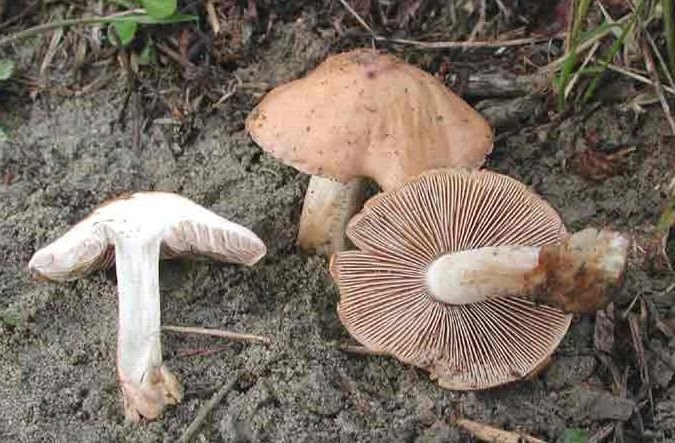Hebeloma mustard (Hebeloma sinapizans)
- Vaega: Basidiomycota (Basidiomycetes)
- Vaevaega: Agaricomycotina (Agaricomycetes)
- Vasega: Agaricomycetes (Agaricomycetes)
- Vasega laiti: Agaricomycetidae (Agaricomycetes)
- Poloaiga: Agaricales (Agaric poʻo Lamellar)
- Aiga: Hymenogastraceae (Hymenogaster)
- Genus: Hebeloma (Hebeloma)
- ituaiga: Hebeloma sinapizans (Hebeloma mustard)

Hebeloma mustard (Hebeloma sinapizans) – the cap of the mushroom is fleshy and dense, while the mushroom is young, the shape of the cap is cone-shaped, subsequently prostrate, the edges are wavy and a wide tubercle. The skin is smooth, shiny, slightly sticky. The size of the cap in diameter is from 5 to 15 cm. The color is from cream to reddish-brown, the edges are usually lighter than the main color.
The plates under the hat are not often located, the edges are rounded and mealy. Color white or beige. Over time, they acquire the color of mustard (for this, the fungus was called “mustard hebeloma”).
The spores are ocher in color.
The leg is voluminous and cylindrical, thickened at the base. The structure is rigid and fibrous, inside spongy. If you make a longitudinal section of the stem, you can clearly see how a wedge-shaped layer descends from the cap into the hollow part. The surface is covered with small brownish scales from which an annular pattern is built along the entire leg. Height can reach 15 centimeters.
The pulp is fleshy, dense, white. It has a radish smell and a bitter taste.
Faʻasalalau:
Hebeloma mustard is found in nature very often. It grows in summer and autumn in coniferous and deciduous forests, more often on the edges of the forest. It bears fruit and grows in large groups.
Mea'ai:
The Hebeloma mustard mushroom is toxic and poisonous. Symptoms of poisoning – colic in the abdomen, diarrhea, vomiting, appear a few hours after eating this toxic fungus.









